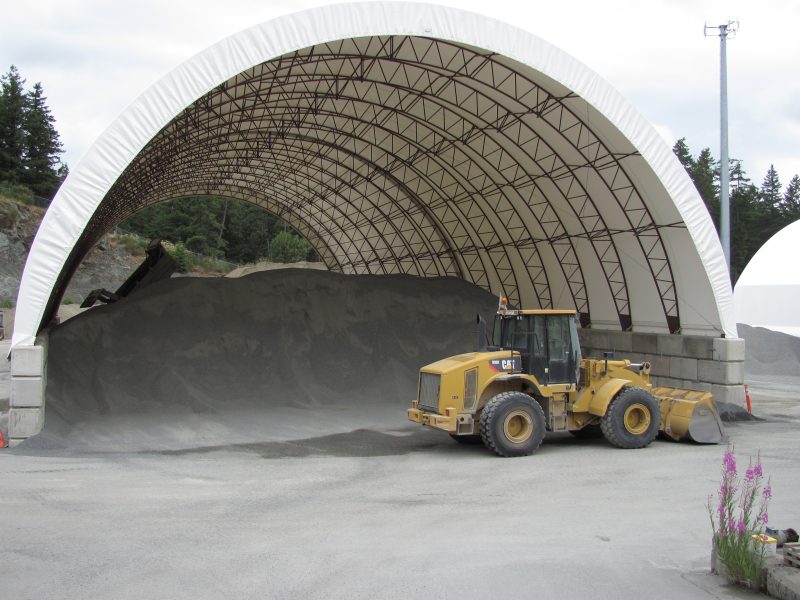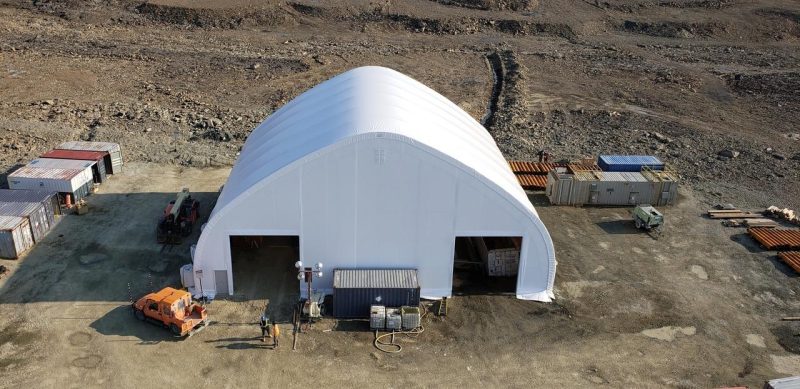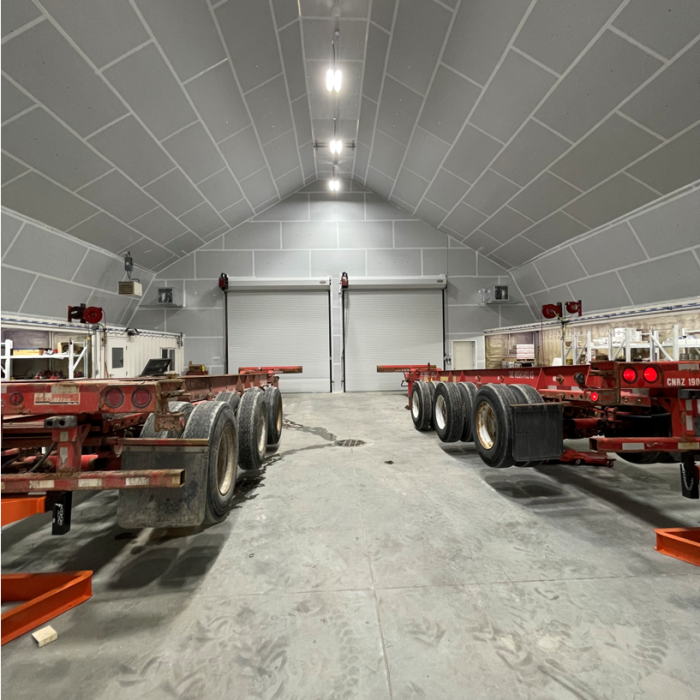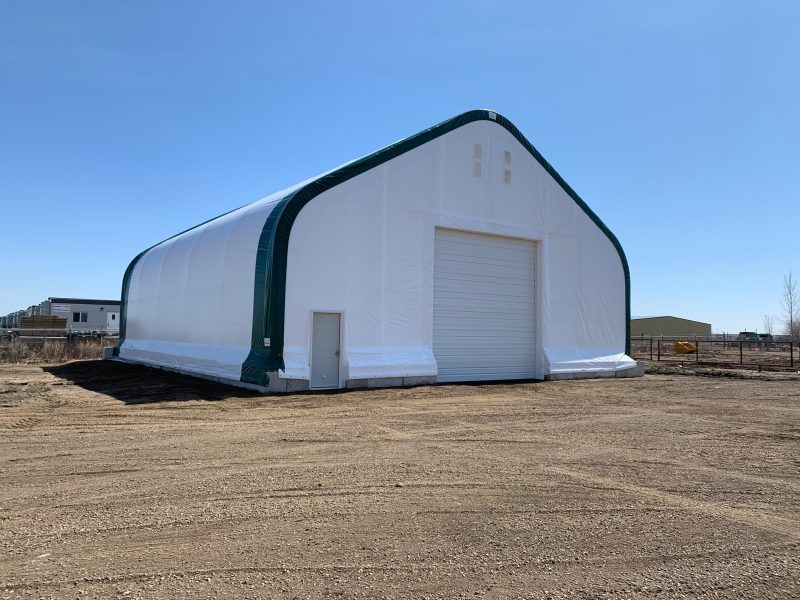Flexible, fast to install, and built for Canadian conditions—fabric hangars are taking off.
When it comes to protecting your aircraft, not just any shelter will do. Whether you’re storing private planes, helicopters, or commercial aircraft, you need a structure that offers strength, space, and adaptability. That’s where fabric buildings from FastCover come in.
Our aircraft tent hangars combine rugged performance with flexible design—offering a reliable and cost-effective alternative to traditional hangars.
Built for Aircraft. Designed for Flexibility.
FastCover fabric buildings are engineered to handle the demands of aviation environments—from private airstrips to remote operations and seasonal service hubs. Whether you need a temporary aircraft hangar or a semi-permanent solution, our buildings offer:
- Clear-span interiors: No interior posts means unobstructed space for aircraft and maintenance equipment.
- Rapid installation: Set up in days, not weeks, ideal for time-sensitive operations or remote deployments.
- Custom sizing: Configure the height and width to suit your specific aircraft—from small planes to rotorcraft and business jets.
- Portability: Need to move your operation? These structures can be disassembled and relocated.
What to Know Before You Choose a Fabric Aircraft Hangar
We get it—choosing the right structure to protect your aircraft is a big decision. Here are a few common questions we hear, and what you should know before committing.
1. Are They Durable Enough for Harsh Weather?
Yes. FastCover fabric buildings are engineered to withstand Canadian winters, high winds, and heavy snow loads. Our frames use powder coated steel, and our fabric is UV-resistant and reinforced for long-term use.
2. Is Security an Issue?
Not at all. Our hangars can be fitted with lockable doors, alarm systems, and security lighting. Combined with perimeter fencing or surveillance, your aircraft is safe and protected.
3. What about Fire Safety?
A fire retardant membrane is available for special applications. Our fabric membrane passes the most demanding certification standards including NFPA 701 and CAN/ULC S-109.
4. Are Fabric Hangars Only Temporary?
While portable, FastCover buildings are built to last and can be fixed permanently or relocated when needed. Many clients use them as semi-permanent hangars for 10–20 years or more, with minimal maintenance and lower operating costs than traditional buildings.
5. Will the Fabric Hold Up Over Time?
Yes, our buildings are backed by a 15 year prorated on all steel & fabric. All building models are reviewed and tested by independent third party professional engineers to ensure structural strength and consistency in manufacturing.’
6. Can They Be Customized to My Aircraft or Operation?
Absolutely. We specialize in custom temporary buildings tailored to industrial needs—offering roll-up or sliding doors, electrical packages, reinforced anchoring, and even insulation for all-season use.
Customize Your Hangar for Maximum Efficiency
FastCover fabric buildings can be fully customized to match your aviation operation’s needs. Popular add-ons include:
- Roll-up sliding doors for easy access
- Insulated packages for year-round use
- Lighting and electrical options for maintenance tasks
- Concrete or portable anchoring systems, depending on site requirements
Whether you’re operating on gravel, asphalt, or a concrete pad, we’ll help you select the best setup for stability and safety.
Ready for Takeoff?
If you’re looking for a cost-effective, high-performance solution for aircraft storage or maintenance, a fabric aircraft hangar could be your perfect fit. Let FastCover help you design a hangar that meets your exact specifications—delivered on time and built to last.
Contact us today to get started.









